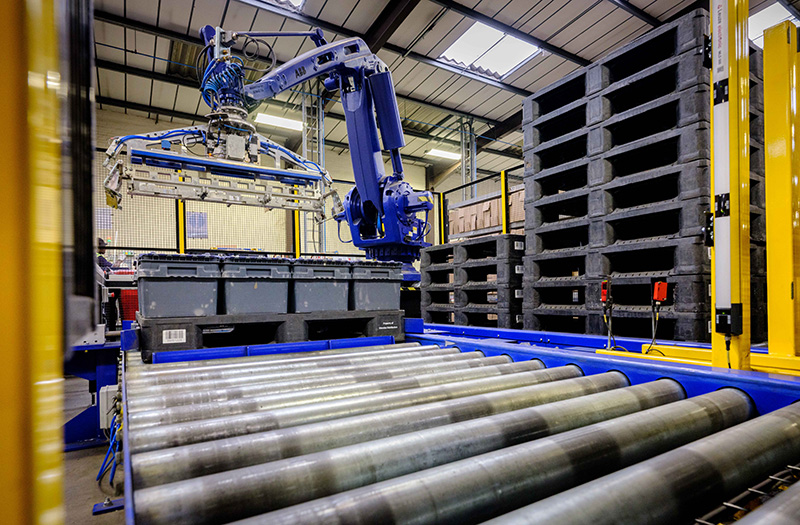Your cart is currently empty!
Increasing automation levels in retail
Jim Hardisty, Managing Director of Goplasticpallets.com shares one of the company’s latest large-scale automation projects, which illustrates how the ever evolving retail industry is pushing the design boundaries of both automation and storage solutions.
Over the last six months our world has changed rapidly, as a result of the Covid-19 pandemic. One of the most dramatic changes has been to the retail sector. Whilst high street sales have dwindled, online retailers have seen and continue to see exceptional growth.
In response to this surge in online demand, many retailers have responded by increasing the level of automation in their operations – in both their warehouses and for distribution – to improve the speed and efficiency of deliveries. And this in turn is pushing the design boundaries not only of the automation systems but the storage platform used to handle and dispatch orders.
Goplasticpallets.com has been fortunate to work with a number of large retailers on automation projects in recent years, and as the industry evolves, customers’ requirements are becoming increasingly complex.
A great example is a solution we supplied recently for one of the UK’s leading department store chains, whose business has shifted considerably towards e-commerce in recent years.

Back in 2015 the retailer approached us looking for a robust, long life plastic pallet that would adhere to the company’s strict deflection parameters when loaded. Deflection was a crucial factor for the retailer, as if a pallet bends too much when loaded, its automated handling system will grind to a halt. Previous pallets that the retailer had tested deflected too far, sometimes by as much as 40mm. We recommended trialling our APB 1210 Pool Perforated 3R pallet in light grey virgin plastic with lips, which deflected by <8mm and passed all the necessary tests. The retailer ordered an initial 12,000 plastic pallets five years ago.
The plastic pallets are being used for storing goods in stackable plastic totes in the retailer’s very narrow aisle warehouse. When the items are needed for an order, the control system ‘calls’ the pallet with the relevant box and the cranes zoom through the narrow aisle to recover the pallet, which it transfers onto a conveyor. Here the pallet moves smoothly through the conveyor and the required tote is robotically lifted off and sent by conveyor to the order picking area. For incoming stock, the tote travels first to the palletising area where it is placed on the pallet – one pallet can hold a total of 30 totes – which is then stored away until it is needed.
Last year the same retailer came to us to order a further 9,500 plastic pallets following the expansion of its warehouse, but rather than recommending the same virgin pallet, we recommended a version in recycled HDPE. In the last couple of years, we have been working very hard to increase and maintain our Responsibility Policy and we are proud that 96% of the plastic pallets we supply today are made from recycled material.
This retailer’s application though called for a very special recycled plastic pallet made from mid-grey material, rather than the standard dark/grey black. We recommended this colour choice due to the high level of automation in the retail operation. With these pallets passing through multiple light and laser sensors, using a paler colour pallet ensures that the pallet and its contents can be properly scanned – where darker colours can absorb the light, making it more difficult for the sensors to see the pallet.
For advice on using pallets in automated systems, call our team of plastic pallet experts on +44 (0)1323 744057, email sales@goplasticpallets.com or use the online chat.
